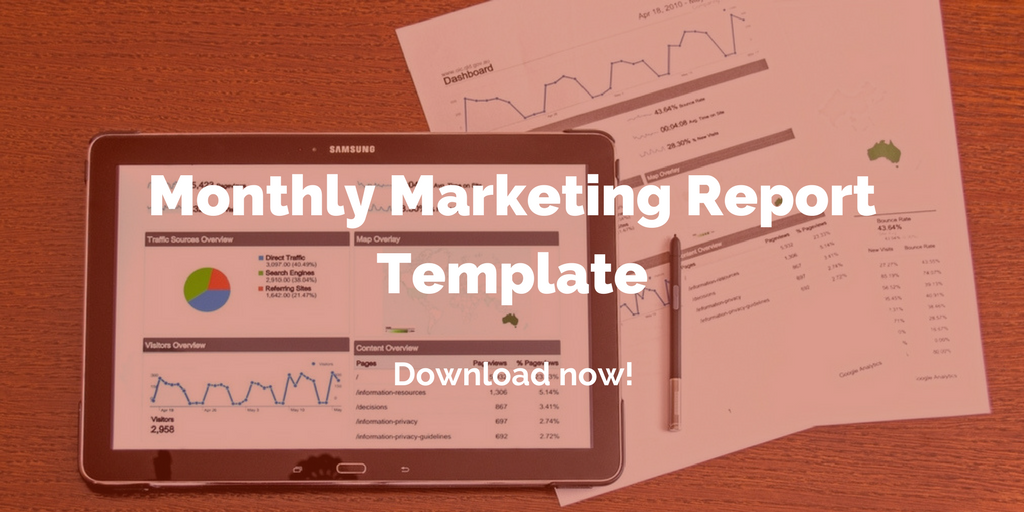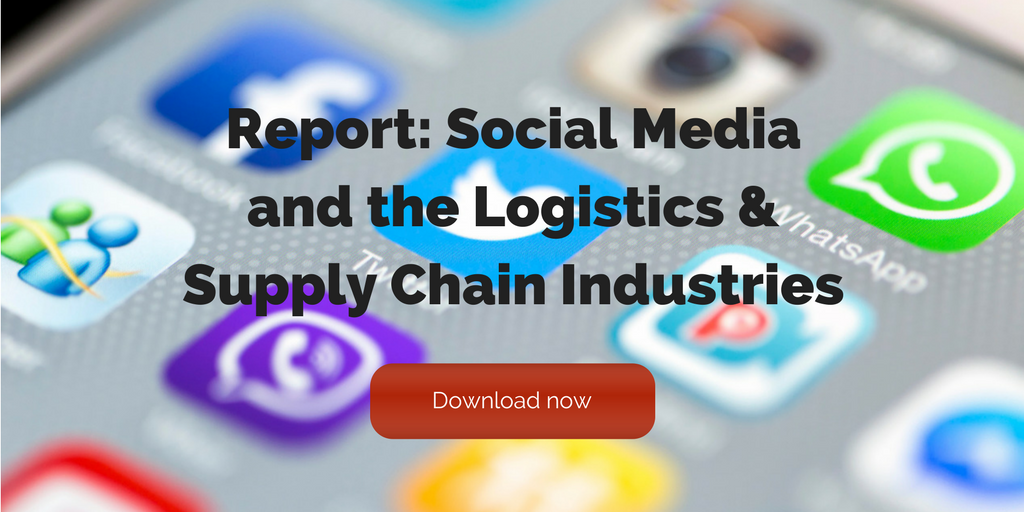
by Fronetics | Aug 28, 2019 | Blog, Content Marketing, Marketing, SEO
Being aware of the marketing acronyms being discussed on the internet is key to staying up with the latest digital marketing trends and ideas.
Highlights:
- Key performance indicators (KPIs) are the metrics you determine to be most important in measuring the success of a digital marketing campaign.
- All-important search engine optimization (SEO) is what allows your page to rank high among search engine results.
- A positive user experience (UX) is crucial to converting leads.
If you’re not up on internet language, the profusion of acronyms can sometimes make it feel like an unbreakable code. Being aware of some key marketing acronyms can go a long way toward helping your business generate online leads and revenue.
There are a seemingly endless supply of acronyms being thrown around out there, from the general to the highly specialized. These eight marketing acronyms are the ones you need to know to help you navigate digital marketing language and be on the cutting edge of best practices for your business.
8 marketing acronyms you need to know
1) KPI: Key Performance Indicator(s)
Effective digital marketing campaigns start with documented goals, accompanied by the metrics you will measure to determine how successful you are at reaching those goals. KPIs are your most important metrics. Choosing the right KPIs for a specific campaign is critical to its success, since these metrics are how you evaluate and tailor your efforts.
2) CTA: Call-to-Action
Even if you haven’t run across this particular one of our marketing acronyms, you’re probably aware of what it refers to. Your CTA is the vital step in which you ask your audience to take an action that moves them one step closer to your objective of connecting them with your company. Creating effective CTAs is key to converting leads.
3) SEM: Search Engine Marketing
SEM refers to the type of advertisements that appear on search engines such as Google, Bing, or Yahoo among the sponsored results. These advertisements can be effective if you choose your keywords wisely.
4) SEO: Search Engine Optimization
SEO is one of the most important marketing acronyms you’re likely to run across. All of your digital assets, particularly all website content, should be geared toward ranking highly when prospects search for keywords relevant to your business. There are mountains of material written on SEO, as it’s a crucial topic for digital marketers. Our four-part series on writing for SEO is a good starting place.
5) CRO: Conversion Rate Optimization
CRO refers to the idea of increasing the percentage of website visitors that take the desired action on your page – or, more specifically, the visitors that convert into leads. Optimizing your conversion rate means ensuring that your website design, content, and functionality make it easy and attractive to navigate, as well as being persuasive.
6) CTR: Click-Through Rate
Your CTR is the number of clicks an advertisement or post receives divided by the number of times it has been shown or shared. This metric not only lets you determine how effective your content is, but it also helps you measure engagement on social channels. An engaged audience and a high CTR means more opportunities to convert leads.
7) CPL: Cost Per Lead
When you’re paying for leads to be delivered to you through an ad campaign, your CPL refers to the amount you pay each time a user fills out a form, subscribes to your blog, or provides an email address.
8) UX: User Experience
When it comes to digital marketing, user experience refers to the ease and navigability of your website and other digital assets. CRO, for example, is one of many aspects of UX, which also is affected by the overall architecture of your site, how quickly your page loads, the quality of your content, how your website interacts with your social media accounts, and more.
What other marketing acronyms have you found useful?
Related posts:

by Fronetics | Aug 7, 2019 | Blog, Content Marketing, Logistics, Marketing, Supply Chain
As digital natives flood the purchasing landscape, visual presentation is critical. Our infographic offers tips to improve your visual content to resonate with today’s buyers.
Highlights:
- Visual content can be more easily digestible and compelling than purely text-based content.
- Optimize your visual content for search engines by accompanying it with searchable text and tags.
- Keep branding consistent with a unified color scheme and fonts.
The internet is becoming an increasingly visual space, and brands are feeling the pressure to stand out from the masses. But making an effort to improve your visual content doesn’t have to be an arduous chore. In fact, the type of complex information that supply chain marketers often need to present can be far more easily digestible in graphic format.
Strategically created and distributed content that is design-minded and visually appealing is your brand’s best friend. Our infographic offers 5 ideas to improve your visual content efforts, with a focus on broadening your brand’s reach, engaging your audience, and generating leads.
5 tips to improve your visual content

(Made with Canva)
1) Make your content search-engine friendly.
In the same way that social media analytics are struggling to keep up in an increasingly visual climate, search engines have yet to be effective at searching visual content. No matter how compelling your visual content, you won’t be getting the most out of your efforts unless you optimize your content for search engines.
There’s a simple solution to make sure your visual content makes it to the top of relevant search queries: post a text transcript with video or accompanying explanatory text with infographics and images. You can also make sure your visual content is easily searchable by categorizing and organizing it. Label visual assets like logos and images with relevant keywords, and tag them when publishing.
2) Make data come alive.
When it comes to presenting the kind of turgid data that’s often inherent in supply chain purchasing, visual formats are a marketer’s best friend. Supply chain marketers are ideally positioned to make use of attractive data presentation, including charts, graphs, and animated images. Organizing data into a visually appealing graphic, video, or animation makes it far more engaging and digestible for your audience.
3) Create reusable graphics.
Whether you’re creating visual content in house or outsourcing visual content creation, it behooves you to consider how it can be reused. When designing an infographic, for example, think about how it can be broken up into multiple graphics, each with a set of statistics or other information. You can combine these smaller graphics to other pieces of text content, adding visual appeal and boosting engagement.
These visual snippets are also ideal for posting on social media as teasers to link to fuller visual assets.
4) Consistency is key.
One of the most important things you can do to improve your visual content is make sure it’s consistent. Your brand’s visual presentation includes fonts, font sizes, colors, image styles, and any other graphic elements that are visual indicators of your brand’s identity.
Make sure all content creators in your organization receive clearly documented visual guidelines, along with samples for their use. Every time you publish visual content, include checking these guidelines as part of your editorial process.
5) Tell a story with your content.
The difference between good visual content and great visual content ultimately boils down to one thing: emotional resonance. The most significant way you can improve your visual content is to start with the idea of telling a story.
Ideally, you’re presenting data in a way that communicates a feeling and elicits an emotional response from the viewer. If your data is impactful, your viewers will forge an emotional connection with your brand.
What tips do you have to improve your visual content?
Related posts:


by Jennifer Hart Yim | Jul 30, 2019 | Blog, Content Marketing, Leadership, Marketing, Supply Chain
Supply Chain Management can boost productivity – and alleviate issues – for companies as they scale.
This guest post comes to us from Argentus Supply Chain Recruiting, a boutique recruitment firm specializing in Supply Chain Management and Procurement.
Awhile ago, we blogged about how more Startups are looking to Supply Chain Management to boost their productivity as they scale. Procurement – the effective purchasing of raw materials, back-office goods and professional services – as well as Logistics – the orchestration of the movement of those goods – might not seem to be as important as sales, marketing, R&D or finance at first blush. But failure to account for these factors can be a major bottleneck to growth, and many a startup has failed because of Supply Chain issues.
Supply Chain Management is an important factor for fast-growing hardware manufacturing companies, whether they’re producing goods overseas or at home. But it’s important in food manufacturing, consumer goods, Pharma, and Cannabis as well, as well as any industry with direct B2B sales. In fact, we recently brought on a new Cannabis client who’s scaling up a strategic sourcing operation in all of their Procurement, so that all their spend is captured and accounted for as they grow, rather than after. Rather than taming out-of-control spend later, they’re maximizing profitability by being strategic about the company-wide spend now, by hiring a team of Procurement category managers.
The most successful startups grow quickly by relentlessly focusing on the consumer – giving them a better product, or a better customer experience – but customer service is dead on arrival without an effective Supply Chain. Any growing company needs people to forecast demand, produce or source the goods to meet that demand, and ship it quickly and reliably to consumers, while only holding as much inventory as absolutely necessary.
As a founder or senior leader in a growing company, you might think that you have the expertise to “figure it out” on the fly, because how hard can it be? But trust us, if you don’t have Supply Chain experience, you can’t. Developing a product line and business model is hard. Getting it funded is harder. But as a founder, you don’t know true pain until you’ve been saddled with massive inventory because you failed to plan, or until you’ve seen an entire shipment waiting at port for customs clearance three weeks before your launch because you don’t have someone on staff who has the experience to get the paperwork in order before you need to.
Avoid failure.
That’s how Supply Chain has always advocated for itself, and you may have even heard about these considerations before. Get your Supply Chain in order, and you might avoid pain, but you’ll also experience innovation and opportunities to improve your customer experience in ways you never thought were possible. It can also reinforce your core company values and mission, and pass it on to customers in ways you haven’t considered.
As Dave Evans recently talked about in Bloomberg, setting strong values early is the key to sustainable growth at a startup. Most entrepreneurs get that. But what they don’t always get is the importance of making sure that these values extend into your Supply Chain. Founders need Supply Chain experts who can forge close relationships with suppliers, and find manufacturing partners who can provide opportunities to improve the brand.
Too many founders treat Supply Chain like a transactional necessity: “okay, where are we going to source product from fastest and cheapest?” But Evans talks about how founders can actually use Supply Chain Management as an opportunity to improve and build their brand. He uses the example of Everlane, which has built a successful fashion brand out of radical supplier transparency – making it plain to customers exactly where their products come from, and breaking down all the costs associated with bringing it to market.
So where do you start?
Different areas matter more for different industries, and different levels of maturity. A seed-stage startup might need to set an overall direction for logistics and distribution (i.e. what sort of 3rd party logistics solution will you look to leverage?), whereas a scaling business might be able to leverage strong Procurement to extract additional value from supplier relationships – as with the Cannabis company we mentioned above.
Do you want your Supply Chain to be fast, cheap, or flexible? Skilled supply chain professionals can usually help you excel at two of those. The best in the business can get you all three. But if you don’t have any of that expertise, you’ll get zero.
Areas that startups need:
- Logistics and Distribution Strategy
- Demand Planning
- Production Planning
- Lead Time Management
- Inventory Planning
- Supplier Relationship Management
- Strategic Sourcing/Shared Services Procurement (growth stage)
Today’s top Supply Chain Management professionals can bring all these considerations to bear. One other thing to consider: manpower expenses are one of the highest costs in scaling a business, and you don’t want to take on extra full-time staff if you don’t have to. So one thing companies will do is hire a seasoned expert who has developed and implemented Supply Chain strategies at scaling companies before on a contract basis – say 6 or 12 months – to implement the process and strategy, and then move on to another contract. You will likely have to pay a bit more per-hour, but it can be a tremendously flexible and high-value option, especially because some of the best in the business are now working on contracts for growing companies.
Any way you go about it, failing to plan a Supply Chain can quickly sink a growing company – and developing one that excels will make a growing company soar.
If you fail to plan, you plan to fail. Having Supply Chain Management professionals in the room is some of the best business planning possible in 2019. That’s why they’re a founder’s secret weapon.
Related posts:


by Fronetics | Jul 23, 2019 | Blog, Marketing, Social Media, Video Marketing
Videos drive greater conversion rates and increased leads. Here are four takeaways from Vidyard’s 2019 State of Video in Business Report.
Highlights:
- Over 82% of businesses reported greater investments in video last year
- Vidyard’s report stated that high-value video content has become a key factor in SEO and ranking.
- Aside from just tracking views, businesses will also track engagement time, drop-off rates, and reach across all channels, as well as the impact of video on lead generation and revenue.
Video Transcript:
Hi I’m Christy LeMire, the Director of Video Strategy at Fronetics, and today I’ll be sharing 4 takeaways from Vidyard’s 2019 State of Video in Business Report.
This report confirmed what us digital marketers already know, video is everywhere. Over 82% of businesses reported greater investments in video last year and it’s no surprise why. Videos drive more sharing, produce greater conversion rates and increase leads.
Here are the 4 key takeaways from the 2019 State of Video in Business Report
-
Video isn’t just for social media
Though Facebook and Snapchat saw over 8 billion video views every day on their platforms, video didn’t stop with social media. Video took center stage in digital marketing and brand awareness. Vidyard’s report stated that high-value video content has become a key factor in SEO and ranking. This trend will continue to grow as marketers begin using video for frequently asked questions and explanations of complex and intricate business details.
-
Short and sweet videos
Marketers used to create highly produced promotional videos for their websites and blogs. But now marketers are focusing on conversational and educational videos created specifically for social media. These casual videos give followers timely updates on industry trends, a behind the scenes look at projects, and interviews with clients and colleagues. The transparency created in these videos brings personality to your business. Marketers will continue to create video for social media, their blog and YouTube channels, resulting in a spike in short-form content like snackable video series.
-
Video experiences focus on engagement
New approaches to video—including series-based content, video podcasts, interactive video, and personalized video—are helping marketers boost engagement and expand audiences. Experts predict we’ll see these new approaches gain more traction as the tools to create them become more user-friendly and best practices become more widely understood.
-
Expanation of video analytics
As video has expanded, so have the needs of video analytics. Businesses will start making use of analytics tools to track video metrics that align with their digital marketing strategy. Aside from just tracking views, businesses will also track engagement time, drop-off rates, and reach across all channels, as well as the impact of video on lead generation and revenue. With more detailed reporting, businesses will see more efficiency and a higher ROI from their video content.
Check out the full report on our blog and find more digital marketing tips on our website at Fronetics.com.
Related posts:


by Fronetics | Jul 17, 2019 | Blog, Content Marketing, Current Events, Logistics, Marketing, Supply Chain
Here are four ways the Amazon effect is shaking up supply chain trends – and why it’s a net positive for the industry.
Highlights:
- More companies will start to tap into the gig economy in the last mile, and Uber-style delivery companies will emerge.
- To meet growing customer demand, same-day delivery will become increasingly standard.
- Supply chain leaders will be increasingly evaluated according to customer experience.
Here’s the thing about adversity: it has a tendency to test our strength, and, more often than not, it brings out the best in us. There’s no doubt that the meteoric ascendency of Amazon has created plenty of adversity for the retail, transportation, and supply chain industries. But as the corporation continues to shake up supply chain trends, it’s actually giving the industry an opportunity to sharpen and refine its practices.
Amazon’s dominance has already influenced supply chain trends in big ways. Industry-wide, companies have been compelled to reflect how they do business. In many cases, it’s been a painful process: businesses have had to reinvent, in everything from what and how processes are implemented to the choice of new technologies to purchase. But despite the difficulty, the reinvention process has the potential to pay big dividends in the long term.
Experts are predicting that there are four major ways in which Amazon will continue disrupting supply chain trends going forward.
4 ways Amazon will keep disrupting supply chain trends
1) Uber-style delivery companies
If you think e-commerce sales are high, you haven’t seen anything yet. Recent data from Statista predicts that e-commerce sales will grow as much as 25% by 2022, meaning that retail delivery will undergo analogous growth. As postal service prices rise, FedEx and UPS will likely need to make more deliveries themselves. Meanwhile, Amazon’s 3PL business is booming, putting pressure on the competition.
While these retail delivery services have not yet tapped into the gig economy, largely thanks to opposition from labor unions, it’s only a matter of time according to Convey CEO Rob Taylor. Taylor predicts that a deal will be “brokered between unions and 1099 labor, following in the footsteps of Uber and the taxi and public transportation industries’ unionization efforts.”
2) Same-day delivery
Same-day delivery, once a novelty, is increasingly a subject of consumer demand. PwC’s Global Consumer Insights Survey 2019 found that 40% of online shoppers are willing to pay extra for same-day delivery. To meet the demand retailers are investing in on-demand warehousing and other solutions for increasing localized inventory.
In addition, there’s the rise of drone delivery. Back in 2017, McKinsey estimated that the value of drone activity would reach $1 billion. More recent estimates, including one from ResearchandMarkets, set the value at $11.2 billion by 2022. It’s not long before same-day delivery will be necessary for businesses to compete.
3) Customer satisfaction metrics
As supply chain trends go, the type of metrics used to evaluate personnel may not seem particularly revolutionary. In fact, this type of shift is an indicator of sweeping cultural change. Writing for Fortune, Elementum CEO Nader Mikhail predicts that “tomorrow’s CEOs will come from an unlikely place: the supply chain.”
Customer expectations have been redefined, thanks to the Amazon effect, and businesses need leaders who are skilled at transforming overarching goals into many smaller variables. Where better to find such skills than among the ranks of supply chain leaders?
As a result, in addition to more traditional supply chain key performance indicators (KPIs), Taylor predicts that “net promoter score (NPS) and customer satisfaction (CSAT), which are leading indicators of customer happiness and loyalty, will play a greater role in the supply chain scorecard.” Essentially, supply chain and marketing goals will increasingly intersect.
4) Artificial Intelligence
Artificial Intelligence (AI) is among the most widely discussed supply chain trends in recent years. AI is helping supply chain leaders collate and analyze operational data, and “automating the ability to predict customer demand, forecast product availability, optimize routes for delivery, and better target and personalize communication with customers,” according to Taylor.
Amazon has invested heavily in AI technologies including order optimization, blockchain, warehouse robotics, and the Internet of Things. To keep up, Taylor predicts that “a new generation of supply chain leaders will likely require skills in AI that empower them to translate this highly technical information into business decisions and profitability.”
Navigating the Amazon effect on supply chain trends
When it comes to managing Amazon’s disruptive effects on supply chain trends, the industry will do best to look on them as opportunities. Amazon’s success is, according to Taylor, “pushing brands to modernize and align their teams around the central goal of improving customer experience.” The bottom line is that thanks to Amazon, supply chain companies need to be primarily focused on the customer in order to compete.
Related posts:










